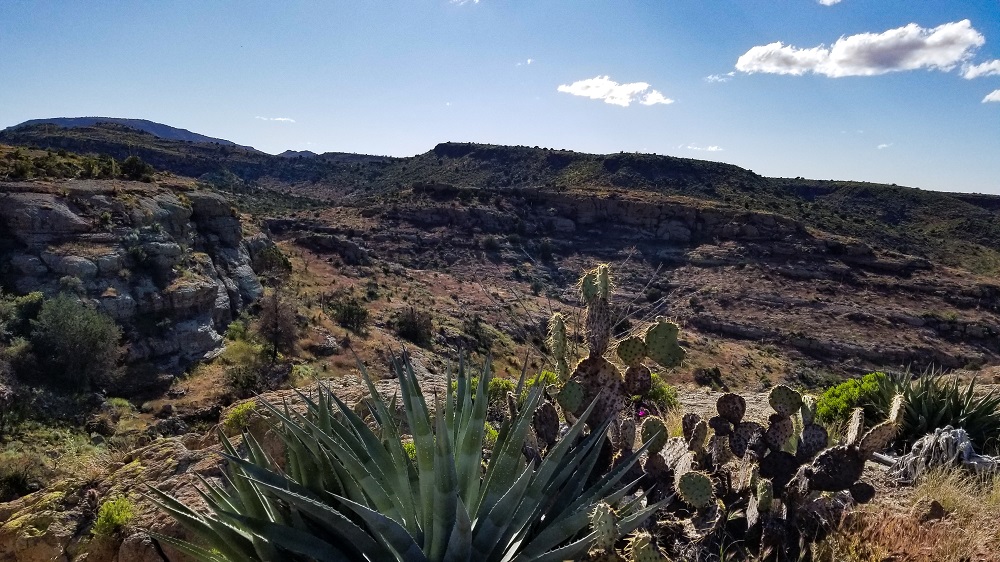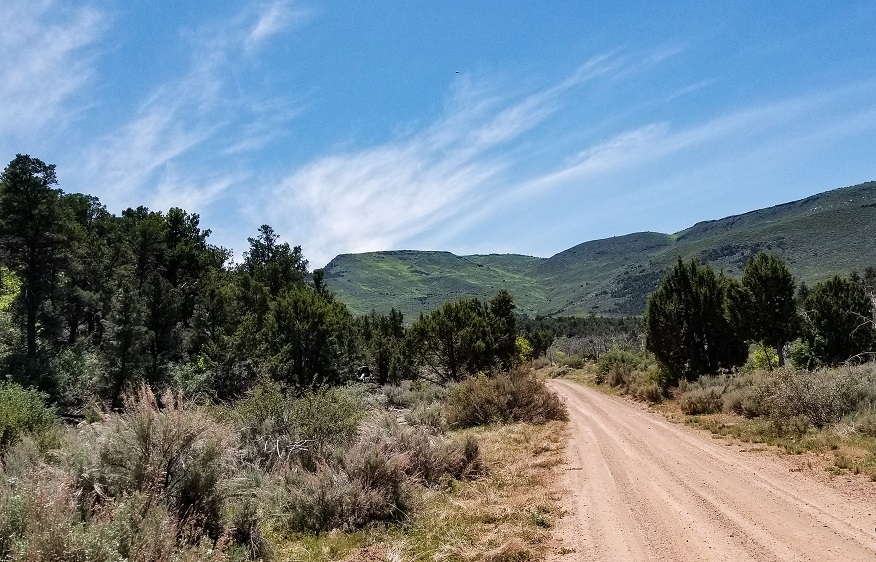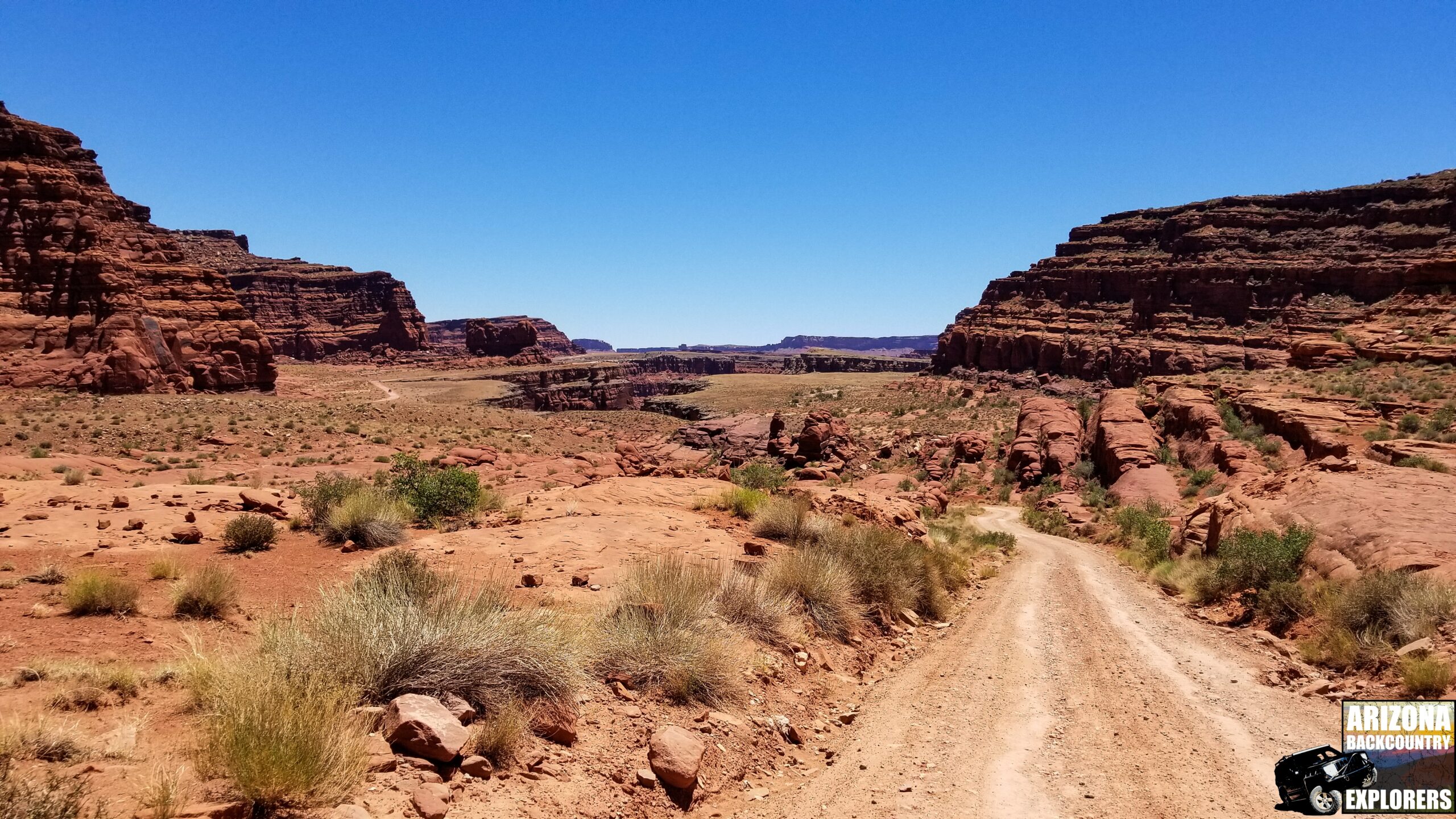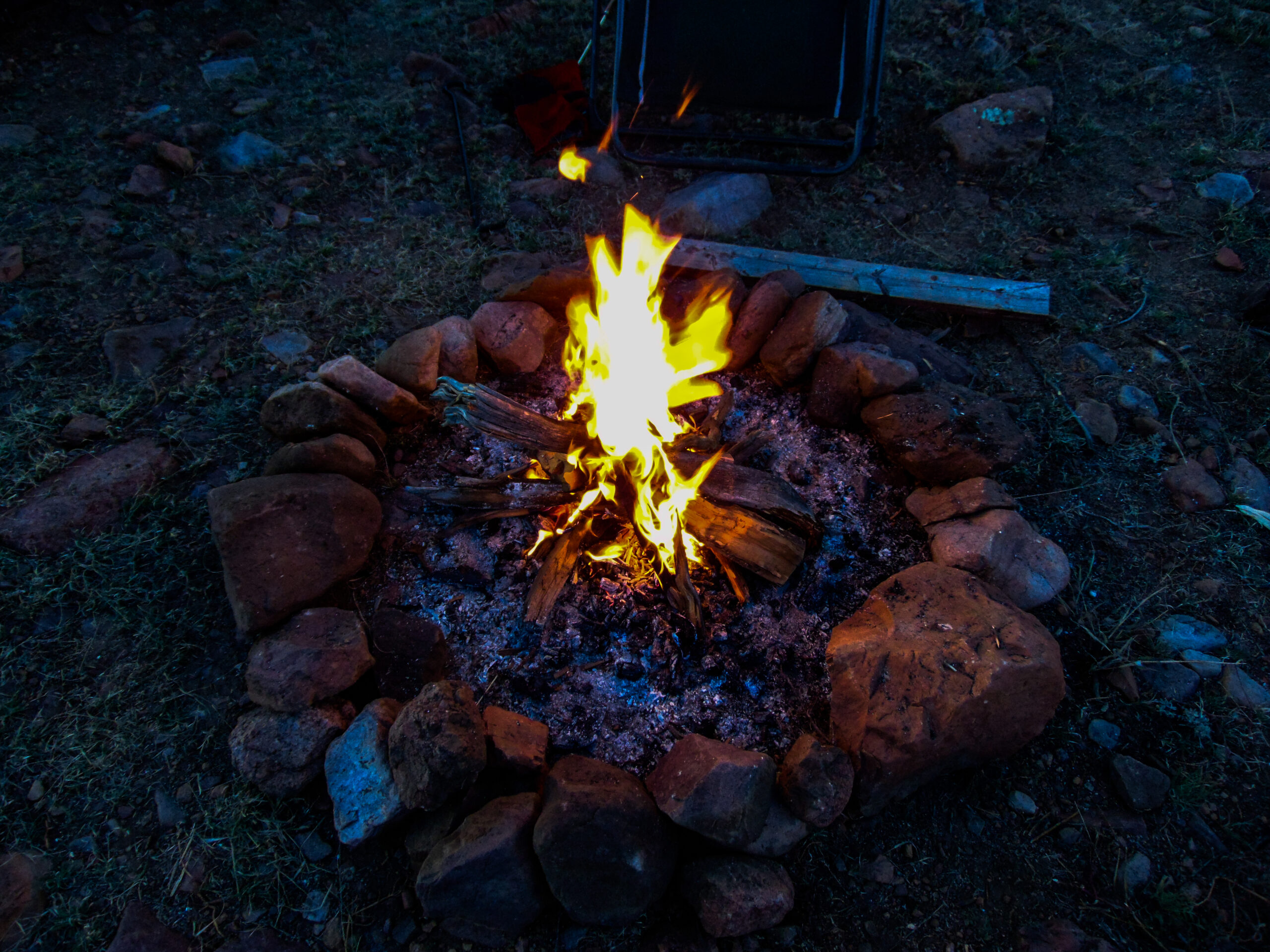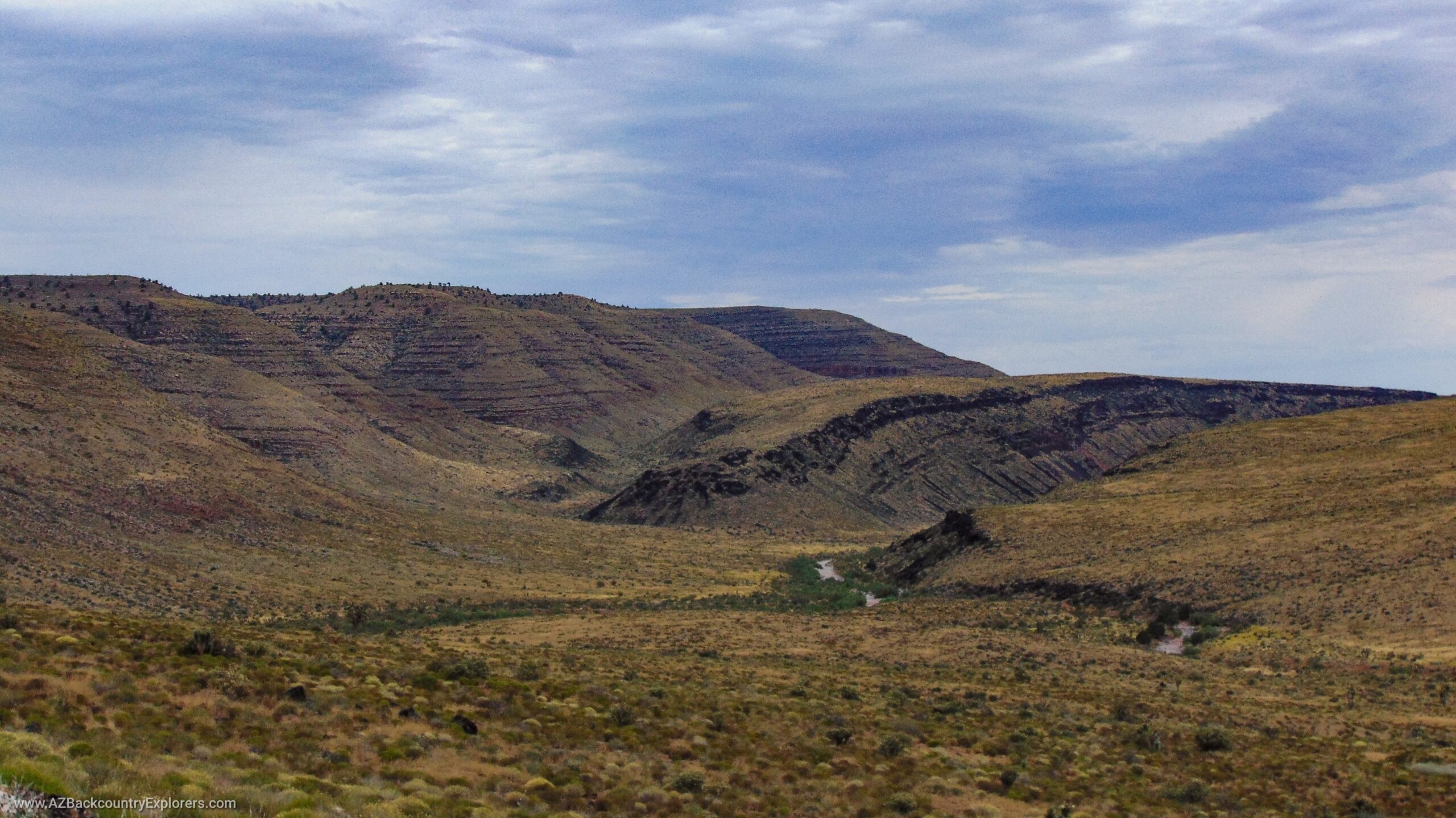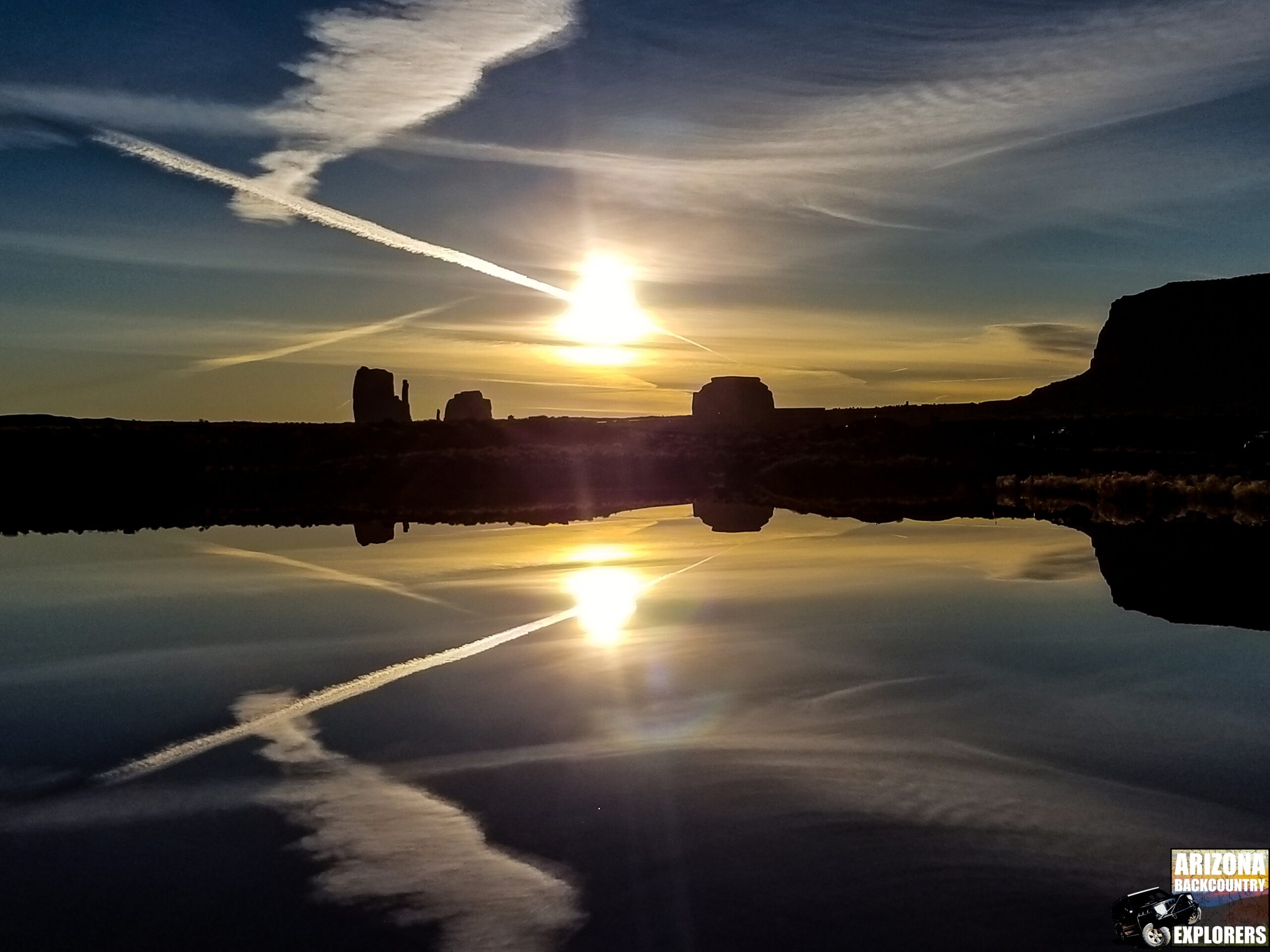Your cart is currently empty!
Posted in
The National Park Service Grand Canyon National Park is proposing a day-use reservation system for the Toroweep Valley and Kanab Plateau. This proposal will limit day use to 25 people a day with two organized tours per day, according to the press release. They claim that the increased popularity of the Tuweep area has resulted in organized groups traveling in vehicle convoys.
“Increasing popularity of the Tuweep area has led to excessive day use for vehicles and visitation, resulting in crowding and congestion along the roads and parking lot, organized groups traveling in vehicle convoys, vehicles exceeding noise limits, and the degradation of natural and cultural resources.”
We submitted our comment at exactly 11:30 pm and the comment period ended at 12:59 pm. National Park Service had already closed comments. Luckily, our friends at the Blueribbon Coalition had already engaged in this process to remind the NPS that they must accept comments from the public via email.
Below is Arizona Backcountry Explorers’ comment on the proposed Tuweep Day use limited entry permit system. We submitted this comment in opposition to the proposed limitations by the National Park Service citing many of the current management plans, federal law, and state law. We also show our support for our partners.
The National Park Service accepted our comment.
Likewise, we have engaged the Mohave County Board of Supervisors in this proposal and they have added our concerns to their agenda. They have a history of defending our right-to-way and right-to-use public lands in their jurisdiction and we are extremely thankful for their attention to these issues.
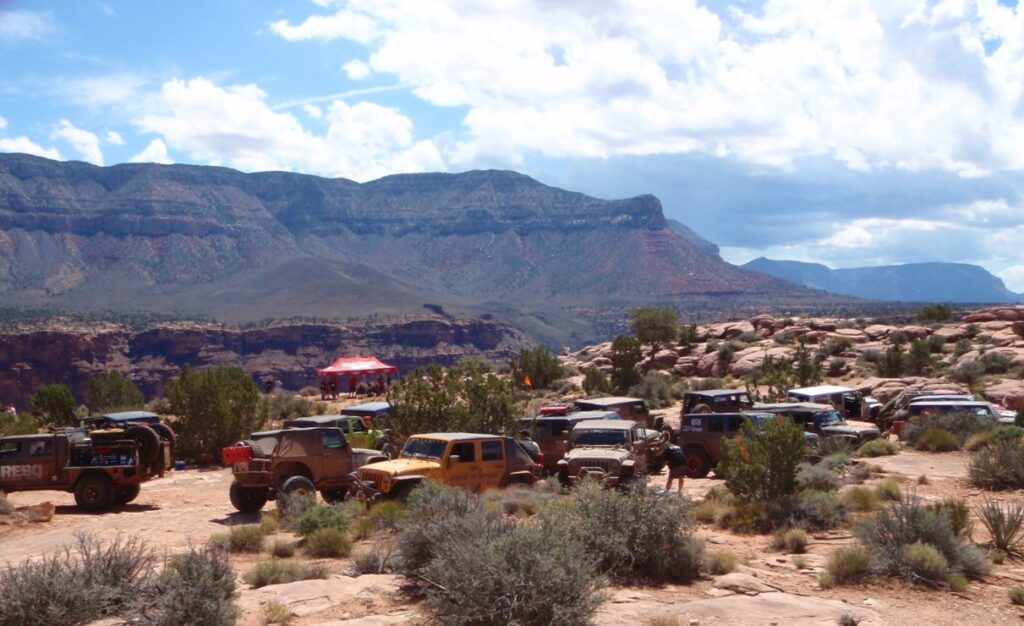
Our comments below are in opposition to additional restrictions in the Tuweep area of the Grand Canyon National Park including Toroweap Valley and the Kanab Plateau. Our analysis of the proposed action by the department is based on factual information and data publicly available by the National Park Service.
Our comments are in support of comments submitted by the Blueribbon Coalition.
Request For Extended Time
Along with this detailed critique of the proposed plan, Arizona Backcountry Explorers requests an extension on the allowed comment period for public participation. We believe the timeframe and information provided by the National Park Service are inadequate to gather sufficient comments to achieve the desired objective.
Comments
In the press release, the National Park Service states the following:
“Increasing popularity of the area has led to excessive day use for vehicles and visitation, resulting in crowding and congestion along the roads and parking lot, organized groups traveling in vehicle convoys, vehicles exceeding noise limits, and the degradation of natural and cultural resources.”
According to publicly available National Park Service data, the Grand Canyon National Park received a total of 6,254,238 visitors in 2017, 6,380,495 in 2018, 5,974,411 in 2019, 2,911,887 in 2020, and 4,550,921 in 2021 leaving a 5 year average of 5,014,390 visits.
Analysis of publicly available Grand Canyon National Park Traffic Data of Tuweep shows a total of 19,595 visited in 2017, 22,910 visits in 2018, 19,217 visits in 2019, 16,555 visits in 2020, and 25,550 visits in 2021 with a 5 year average of 20,765 visits a year.
Visitors of the Tuweep area are 0.44% of all Grand Canyon National Park Visitors making Tuweap the least visited developed area in the Park.
The five-year average for visitation at the Tuweep area for the month of January is 842 visitors while January of 2022 received 458 total visitors. The 5 year average for the Tuweep area for the month of February is 1,217 visitors while February of 2022 received a total of 876 visitors.
According to the publicly available data concerning the Backcountry and River Use Statistics for the year 2019, 1,645 people utilized the Tuweep Campground for a total of 2,673 nights. Approximately 8.56% of Tuweep visitors or 4.5 users a day, stay at the Tuweep Campground for approximately 1.62 days.
Visitor traffic at Tuweep from January and February of 2022 indicates a downward trend in traffic occurring in the Tuweep area when compared with the 2017-2021 five-year average of January and February. It should be expected that this downward trend will continue throughout the year 2022 without the use of a permit system.
This data demonstrates that the Grand Canyon National Park has lost 2.3 million visitors over the past several years, while there has been a minor increase occurring in the year 2021 in the Tuweep area, directly correlating with the removal of COVID-19 Pandemic restrictions.
The 1998 Resource Management Plan for the Grand Canyon National Park requires that “restrictions and public use limits established by the NPS will be based on the results of scientific research and other available data.”
The proposed day use limitation does not meet the guidelines outlined in the various planning documents and the data does not justify the restriction of use. The National Park Service must display significant justification before restricting access and a slight increase in visitation is not sufficient.
The Grand Canyon 1995 General Management Plan
In the press release, the National Park Service states the following:
“The park’s 1995 General Management Plan (GMP) established management objectives for the Tuweep area to include “an uncrowded, rustic, and remote wilderness experience dominated by nature and solitude”. The GMP also identified a carrying capacity to maintain the character of Tuweep and outlined a potential entry reservation system for Tuweep to mitigate vehicle congestion, degradation of area features, and impacts to safety and the visitor experience. Visitation has since grown 250%.”
The Grand Canyon General Management Plan of 1995 does not provide that statement as quoted by the National Park Service in the proposed scoping document. The actual text of the General Management Plan of 1995 excludes the word “wilderness.” In the actual text, it reads, “Maintain Tuweep as a place for an uncrowded, rustic, and remote experience that is dominated by nature and solitude.”
By including the word “wilderness” the National Park Service has given false and misleading context to the management objectives of the Tuweep area that was previously established by public participation processes; local governments who hold concurrent jurisdiction; and public and private land users. Including the word wilderness gives the impression that maintaining the Tuweep area to protect the wilderness characteristics, was the intention of the Grand Canyon General Management Plan when that is not so.
The Tuweep Area is notated in the General Management Plan as one of four developed areas in the Grand Canyon National Park.
On page 16 of The Grand Canyon 1995 General Management Plan in the Tuweep Management Objectives, the Management Plan requires the park to “Maintain park roads at Tuweep in their current primitive, unpaved condition, and encourage access roads outside the park to be consistent with the vehicular experience to be provided inside the park.”
It further requires the National Park Service to, “Provide access that is appropriate and consistent with the character and nature of each landscape unit and the desired visitor experience” and to, “Provide a safe, efficient, and environmentally sensitive transportation system for visitors, employees, and residents, consistent with management zoning and resource considerations” and also, “provide equal access to programs, activities, experiences, and recreational opportunities for individuals with disabilities, as appropriate and consistent with the levels of development and inherent levels of access in areas within the park.”
Under the Undeveloped Area Management Objectives on page 17, the Grand Canyon General Management Plan states the following:
“Maintain roads designated open to public or administrative motor vehicle use in undeveloped areas in an unpaved condition without major improvements. Only consider improvements that reduce resource impacts in keeping the road minimally open for vehicle use. Revegetate all roads not designated for vehicle use, or convert them to trails as appropriate.”
Under Visitor Experience Page 55 of the Grand Canyon General Management Plan states the following:
“Existing roads inside the park will remain dirt and have limited maintenance. Vehicle sizes will be restricted to a maximum of 22’ in length. To reduce congestion and natural resource impacts at the rim, the parking area and toilet at Toroweap Overlook will be removed and the area revegetated. A new 25-space parking area and toilet will be provided in an appropriate place adjacent to the existing road near the entrance to the Saddle Horse Canyon trail. A small roadside pull-off will be designated at the Tuckup trailhead. These parking areas will be located to avoid ephemeral pools and other sensitive resources.
Existing trails will be maintained, including Tuckup, Saddle Horse Canyon, and access to the Lava Falls trail. The existing road from the proposed parking area will be converted to a pedestrian trail, although visitors with disabilities and service vehicles will still be allowed to drive to the rim. A new loop trail will be built from the west side of the new parking lot to the Saddle Horse Canyon trail and Toroweap Overlook.”
However, the National Park Service has closed motorized access to the rim at the Tuckup Trail. This is a significant loss to recreation users and forces visitors to the remaining recreation opportunities which the National Park Service now claims are overcrowded. The road to the Tuckup trailhead continues from the current parking area for approximately 3 additional miles before terminating at a footpath near the rim. These 3 miles provide users with 2 additional camping and parking areas that, if open, would relieve congestion at the Toroweap Overlook.
In addition, the National Park Service has not decommissioned the Toroweap Overlook and expanded the parking area for 25 spaces at the Toroweap Campground. There are only two spaces available at the campground. Between the Toroweap overlook and the campground, there is barely enough room to park 25 vehicles.
The General Management Plan intended to create a balanced management strategy and expand parking for visitors while maintaining the existing access, lookouts, campgrounds, and other resources. It appears that the National Park Service has not complied with the General Management Plan and in doing so has concentrated users at the Toroweap Lookout.
Revised Statute 2477 Rights-Of-Way
The road known as County/NPS Highway 115 leading to the Tuweep Lookout has provided access to the North Rim of the Grand Canyon for at least 136 years to date and is found on the 1886 Mount Trumble Quadrangle 1:250000 scale USGS map completed under the Powell Survey. It is also found on the original survey plat of township 034.0N Range 007.0W commenced on March 17, 1925, by Cadastral Surveyors William E. Hiester and Willis W. Brandy and filed with DM ID 197973. Shortly after, homestead patents (1082024, 1077572, 1078590, 1064031) were issued between the years 1933 and 1936. The same road is then found on the 1967 Vulcans Throne Quadrangle 1:24000 Scale USGS map.
All of the existing roads including Highway 115, and many that are currently closed in the Toroweap Valley and Kanab Plateau, predate any Presidential Proclamation or act of the US Congress that withdrew the said land from public entry under the various homestead or mining laws. This also includes the several roads now closed to motorized travel that lead to Toroweap Point, and The Cove along the Lake Mead Recreation Area boundary.
It wasn’t until the Grand Canyon National Park Enlargement Act of 1975 that the existing boundary of the Grand Canyon National Park was expanded to include the Toroweap Valley and the Kanab Plateau.
Highway 115 and all other existing roads in the Toroweap Valley and Kanab Plateau are public rights-of-way that were granted by the U.S. Congress under Revised Statute 2477 and are thus governed by Arizona law. It is further asserted that the grant provided by the U.S. Congress is a property right held by the state on behalf of the people and no agency of the federal government has any authority over the validity, recognition, or management of RS 2477 rights of way unless authorized by an act of US Congress.
Revised Statutes 2477 (R.S. 2477) states, in its entirety:
“Sec. 8. And be it further enacted, That the right of way for the construction of highways over public lands, not reserved for public uses, is hereby granted.” 8 of the Act of July 26, 1866, 14 Stat. 253, later codified at 43 U.S.C. 932.
The Government Accountability Office Comptroller General Decision B-S77719 issued on August 20, 1997, made section 108 of the Department of Interior and Related Agencies Appropriations Act of 1997, permanent law.
Section 108 of the Department of Interior and Related Agencies Appropriations Act of 1997 reads as follows:
“No final rule or regulation of any agency of the Federal Government pertaining to the recognition, management, or validity of a right-of-way pursuant to Revised Statute 2477 (43 U.S.C. 932) shall take effect unless expressly authorized by an Act of Congress subsequent to the date of enactment of this Act.” 110 Stat. 3009-200
On February 6, 2004, the GAO reinforced this position by issuing opinion B-300912 further prohibiting the department from issuing Memorandums of Understanding (MOU) pertaining to the recognition, validity, and management of RS 2477 rights-of-way. The GAO determined that MOUs are a “Final Rule that is prohibited from taking affect under section 108.”
Revised Statute 2477 (RS2477) has been interpreted by state and federal courts and by the Department of Interior innumerable times since its passage by the U.S. Congress in 1865. These interpretations have consistently outlined fundamental, core principles and set the precedent which has guided its application over the years. In particular, the statute has been applied universally by reference to state law.
Early federal regulations stated:
“This grant [R.S. 2477] becomes effective upon the construction or establishing of highways, in accordance with the State laws, over public lands not reserved for public uses. No application should be filed under this act, as no action on the part of the Federal Government is necessary.” 56 I.D. 533 (May 28, 1938).
These regulations were retained, virtually unchanged, for 110 years
“No application should be filed under R.S. 2477, as no action on the part of the Government is necessary. . . . Grants of rights-of-way referred to in the preceding section become effective upon the construction or establishment of highways, in accordance with the State laws, over public lands, not reserved for public uses.” 43 C.F.R. 2822.1-1, 2822.2-1 (October 1, 1974)(See also, 43 C.F.R. 244.54 (1938); 43 C.F.R. 244.58 (1963).
In 1986, the Department recognized its duty to honor prior, valid existing rights:
“A right-of-way issued on or before October 21, 1976, pursuant to then-existing statutory authority is covered by the provisions of this part unless administration under this part diminishes or reduces any rights conferred by the grant or the statute under which it was issued, in which event the provisions of the grant or the then-existing statute shall apply.” 43 U.S.C. 2801.4 (February 25, 1986).
Supplementary information supplied by the Department stated:
“It was not the intent of the proposed rulemaking, nor is it the intent of this final rulemaking, to diminish or reduce the rights conferred by a right-of-way granted prior to October 21, 1976. . . . In addition, if questions should arise regarding the rights of a right-of-way holder under a grant or statute, the earlier editions of the Code of Federal Regulations on rights-of-way will remain available to assist in interpretation of the rights conferred by the grant or earlier statute. . . . In carrying out the Department’s management responsibilities, the authorized officer will be careful to avoid any action that will diminish or reduce the rights conferred under a right-of-way grant issued prior to October 21, 1976.” 51 Fed.Reg. 6542 (February 25, 1976).
The Department also recognized the role of state law when making representations to the courts:
“The parties are in agreement that the right of way statute is applied by reference to state law to determine when the offer of grant has been accepted by the construction of highways.” Wilkenson v. Dept. of Interior of United States, 634 F.Supp. 1265, 1272 (D. Colo. 1986) (citation omitted).
State courts have also been consistent in their treatment of R.S. 2477 rights-of-way:
Under this act [R.S. 2477] highways could be established over public lands not reserved for public uses while they remained in the ownership of the government. Congress did not specify or limit the methods to be followed in the establishment of such highways. It was necessary, therefore, in order that a road should become a public highway, that it be established in accordance with the laws of the state in which it was located. Ball v. Stephens, 158 P.2d 207, 209 (Cal. Ct. App. 1945).
Federal courts have concurred:
“The salient issue is whether the scope of R.S. 2477 rights-of-way is a question of state or federal law. Especially when an agency has followed a notorious, consistent, and long-standing interpretation, it may be presumed that Congress’ silence denotes acquiescence: “Government is a practical affair, intended for practical men. Both officers, lawmakers, and citizens naturally adjust themselves to any long-continued action of the Executive Department, on the presumption that unauthorized acts would not have been allowed to be so often repeated as to crystallize into a regular practice. That presumption is not reasoning in a circle, but the basis of a wise and quieting rule that, in determining the meaning of a statute or the existence of a power, weight shall be given to the usage itself,–even when the validity of the practice is the subject of investigation.” United States v. Midwest Oil Co., 236 U.S. 459, 472-73, 35 S.Ct. 309, 312- 13, 59 L.Ed. 673 (1915).
“Under R.S. 2477, a right-of-way could be established by public use under terms provided by state law.” Sierra Club v. Hodel, 675 F.Supp. at 604. “Whether a right of way has been established is a question of state law.” Shultz v. Department of Army, U.S., 10 F.3d at 655.
FLPMA EXPLICITLY PROTECTS PRIOR VALID EXISTING RIGHTS
The Federal Land Policy Management Act of 1976 (FLPMA) states:
“Nothing in this Act, or in any amendment made by this Act, shall be construed as terminating any valid lease, permit, patent, right-of-way, or other land use right or authorization existing on the date of approval of this act.” FLPMA 701(a), 43 U.S.C. 1701 note (a).
“All actions by the Secretary concerned under this Act shall be subject to valid existing rights.” FLPMA 701(h), 43 U.S.C. 1701 note (h).
“Nothing in this title [43 U.S.C. 1761 et seq.] shall have the effect of terminating any right-of-way or right-of-use heretofore issued, granted, or permitted.” FLPMA 509(a), 43 U.S.C. 1769(a).
FEDERAL JURISDICTION
Article 1 Section 8 Clause 17 of the US Constitution states the following:
“The Congress shall have Power To lay and collect Taxes, Duties, Imposts and Excises, to pay the Debts and provide for the common Defence and general Welfare of the United States; but all Duties, Imposts and Excises shall be uniform throughout the United States… To exercise exclusive Legislation in all Cases whatsoever, over such District (not exceeding ten Miles square) as may, by Cession of particular States, and the Acceptance of Congress, become the Seat of Government of the United States, and to exercise like Authority over all Places purchased by the Consent of the Legislature of the State in which the Same shall be, for the Erection of Forts, Magazines, Arsenals, dock-Yards, and other needful Buildings.”
There are three methods by which the United States obtains exclusive or concurrent jurisdiction over federal lands in a state: (1) a state statute consenting to the purchase of land by the United States for the purposes enumerated in Article 1, Section 8, Clause 1 7, of the Constitution of the United States; (2) a state cession statute; and (3) a reservation of federal jurisdiction upon the admission of a state into the Union. See Collins v. Yosemite Park Co., 304 U.S. 518 (1938)
The National Park Service holds Concurrent jurisdiction with the state of Arizona within the boundary of the Grand Canyon National Park. According to The Grand Canyon National Park Law Enforcement, Jurisdictional Report prepared in August 2010, and as required and authorized by Title 37 Chapter 2 Articles 15 and 17 of the Arizona Revised Statute, The National Park Service followed the proper procedure to acquire Concurrent Legislative jurisdiction over lands within the Grand Canyon National Park boundary.
Concurrent Jurisdiction is defined in the Second Inventory Report on Jurisdictional Status of Federal Areas Within The States issued on June 30, 1962, by the General Service Office, as the following:
“This term is applied in those instances wherein in granting to the United States authority which would otherwise amount to exclusive legislative jurisdiction over an area, the State concerned has reserved to itself the right to exercise, concurrently with the United States, all of the same authority.”
It has long been established, that various laws of the Arizona Revised Statute apply to the surrounding land and roads within the Grand Canyon National Park Tuweeep area including ARS 37. 931 pertaining to Revised Statute 2477; ARS 26. 6701 requiring a petition by county residents and a formal process by the County Board Of Supervisors to establish, alter, or abandon a RS 2477 Rights-Of-Way.
The Arizona Revised Statute ARS 28-5601 defines the term “highway” as, “any way or place in this state of whatever nature that is maintained by public monies and that is open to the use of the public for purposes of vehicular travel, including a highway under construction.”
The solution to congestion at Tuweep
There is no rationale, based on the most recent publicly available data, to restrict the use of public land in the Toroweap Valley and Kanab Plateau area. Likewise, the National Park Service has not provided adequate information in the press release to make an informed decision based on facts.
The National Park Service should withdraw the proposed restrictions and instead comply with the 1995 General Management Plan, and the 1997 Resource Management Plan, and recognize the concurrent legislative jurisdictional status between the state and local government and the National Park Service.
Therefore, we ask that the National Park Service strongly consider the following:
- Recognize the public right-to-way across federal public lands and maintain a concurrent legislative jurisdictional status with the state of Arizona and Mohave County.
- Work directly with Mohave County Supervisors, Mohave County Public Works, and Mohave County Public Lands Council to maintain the County’s assertation to public rights of way under Revised Statute 2477 under the authority of Arizona Revised Statute 37.931.
- Reopen roads, lookouts, and campsites that are currently closed to the public to provide additional dispersed recreation opportunities for Tuweep visitors as described in the 1995 General Management Plan.
- Providing public land users the opportunity to disperse throughout the area by utilizing the available recreation areas that will generate additional revenue for the Grand Canyon National Park, and put less strain on National Park Resources.
- Develop existing disturbed areas to meet the needs of public land users as directed by the 1995 Grand Canyon National Park General Management Plan and to protect the surrounding resources by providing amenities like parking areas, vault toilets, trash receptacles, ramadas, etc.
- Rearrange staff and enter into intergovernmental agreements with the Mohave County Board of Supervisors, Sherriff’s Department, Arizona Game and Fish, or other local law enforcement to protect resources in the Tuweep area.
- Enter into partnerships with local 4×4 clubs, motorized access organizations, and others to help maintain roads, trails, trailheads, and recreation sites, to alleviate congestion and potential impacts on National Park resources.
- Reopen the several roads that have been closed on the Toroweap Plateau, The Cove, and to the rim at Tuckup Trailhead to alleviate congestion at the Toroweap Lookout.
Tags:
You may also like…

Visit the AZBackroads.com Store

Please Become A Member
We need your help to keep our backroads open. Please join today!






